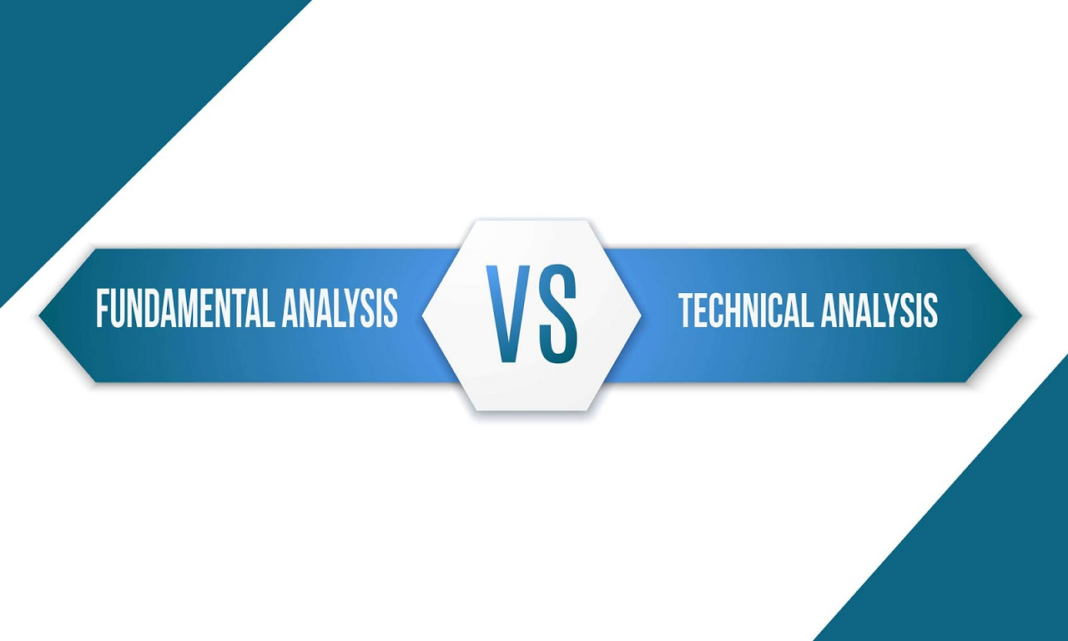There are two main schools of thought when it comes to analyzing stocks: fundamental analysis and technical analysis. Both have their pros and cons, but which one is better? In this article, we’ll take a look at the key differences between the two approaches and see which one comes out on top.

What Is Fundamental Analysis?
Fundamental analysis is a stock valuation method that looks at a company’s financial statements and other key metrics to determine its intrinsic value. Technical analysis, on the other hand, focuses on past price patterns to identify trading opportunities.
While both methods can be used to make investment decisions, they are different in several key ways. Fundamental analysis is a bottom-up approach that starts with a company’s financials and other data points to arrive at a valuation. Technical analysis takes a top-down approach, starting with an overall market view and then drilling down to identify specific trading opportunities.
Fundamentalists believe that prices reflect all available information, so there is no need to look at past price patterns. Technicians believe that prices move in trends, so they focus on identifying those trends and making trades accordingly.
Fundamental analysis is more concerned with a company’s long-term prospects while technical analysis is more focused on short-term price movements. And finally, fundamental analysis requires a greater amount of time and effort to complete while technical analysis can be done quickly and easily with the help of software programs.
What Is Technical Analysis?
Technical analysis is a method of evaluating investments by analyzing statistics generated by market activity, such as past prices and volume. Technical analysts do not attempt to measure a security’s intrinsic value, but instead use charts and other tools to identify patterns that can suggest future activity.
Technical analysis is widely used among traders and investors of all experience levels. Many individuals believe that technical analysis can be an effective way to spot opportunities and make profits in the stock market. However, it is important to note that there is no guaranteed success with any investing strategy, including technical analysis.
The Strengths And Weaknesses Of Each Approach
There are two main approaches to stock market analysis: fundamental analysis and technical analysis. Both approaches have their own strengths and weaknesses, so it’s important to understand both before making investment decisions.
Fundamental analysis is the process of analyzing a company’s financials in order to determine its intrinsic value. This approach looks at factors like a company’s earnings, revenue, expenses, cash flow, and other financial indicators in order to arrive at a fair value for its stock. Fundamental analysts believe that by understanding a company’s financials, they can identify stocks that are under- or overvalued by the market and make investment decisions accordingly.
The main strength of fundamental analysis is that it can help investors identify long-term opportunities in the stock market. By taking a comprehensive view of a company’s financial situation, fundamental analysts can spot companies that may be undervalued by the market and position themselves to profit from future price increases. However, fundamental analysis also has its weaknesses.
One key drawback is that it can take a lot of time and effort to properly analyze a company’s financials. In addition, since this approach relies on public information, all investors have access to the same data and can make similar investment decisions based on this information. As a result, it can be difficult to generate above-average returns using fundamental analysis alone.
Technical analysis is another popular approach to stock market analysis. Unlike fundamentalists, technical analysts don’t focus on a company’s financials or intrinsic value. Instead
Which Approach Is Better?
There are two main approaches to stock analysis: fundamental analysis and technical analysis. Fundamental analysis focuses on a company’s financials, such as its earnings, revenue, and expenses. Technical analysis, on the other hand, looks at a stock’s price history to identify patterns and predict future movements.
So, which approach is better? The answer may surprise you: neither. Both approaches have their pros and cons, and the best way to make money in the stock market is to use a combination of both fundamental and technical analysis.
Fundamental analysis is good for long-term investing. It can help you identify companies that are undervalued by the market and that have strong fundamentals. However, it can take a long time for a company’s share price to reflect its true value, so you need to be patient when using this approach.
Technical analysis is better for short-term trading. It can help you spot trends and make money off of them quickly. However, technical analysis is more prone to error than fundamental analysis, so you need to be careful not to get caught up in false signals.
The best way to make money in the stock market is to use a combination of both fundamental and technical analysis. By combining the two approaches, you can get the best of both worlds: long-term growth potential with short-term profits.

